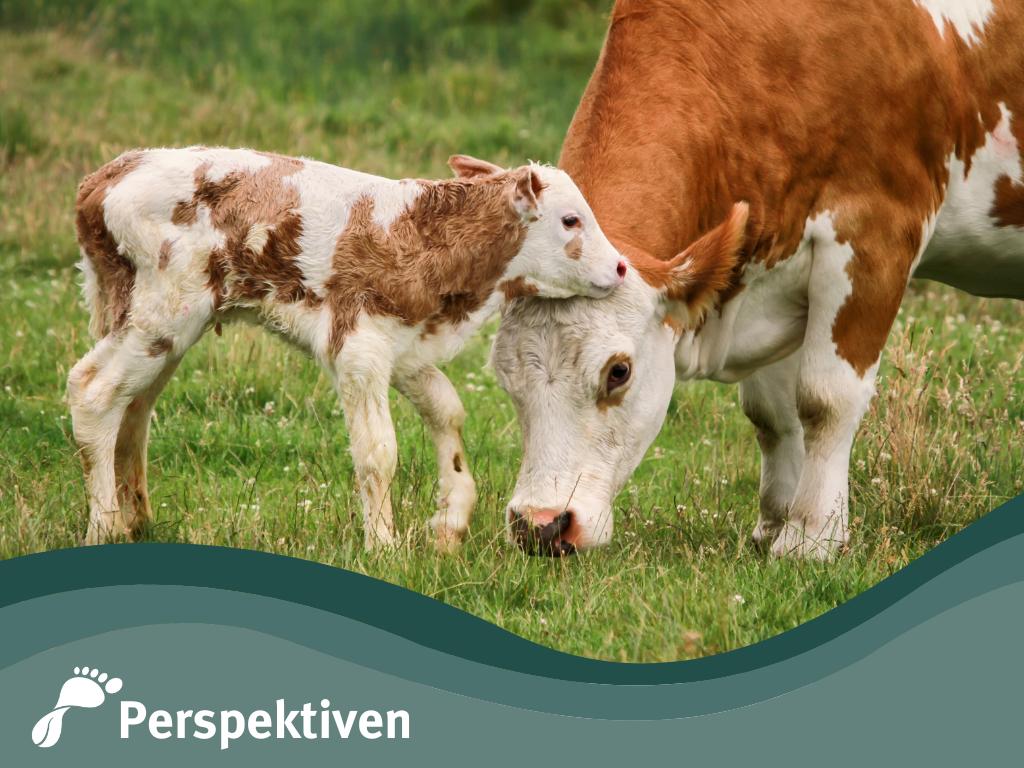From animal welfare to the festive table: milk

MILK
The milk we consume is not actually intended for us. It is mother's milk from the cow to the calf - we would like to say this up front, because not everyone realizes this.
In order for their production to function smoothly in the desired quantity, the suckler cow as such must of course be used as quickly as possible. The average dairy cow is artificially inseminated at 16-18 months, just in time for her to reach sexual maturity. If she calves on schedule, the calf is removed from her after a few hours - days at most. As you can imagine, this is an insane strain for both.
Cows are social creatures and mother cows are particularly caring towards their young.
However, the milk produced by the cow is now too valuable for the calf and is fed to humans in large quantities.
From now on, the calf is fed with milk replacer - from a bucket, usually twice a day due to time constraints. As drinking would happen in smaller portions and more often in the mother's natural environment, the calves drink very hastily, leading to life-threatening diarrhea, which results in the death of around 10% of calves on dairy farms.
After giving birth, the cow is inseminated again as quickly as possible to maintain milk production at the desired level.
And the calves?
In order for the cow to remain productive, she must calve once a year. This results in a surplus of calves.
Female calves usually follow their mother's fate, while male calves are considered waste products in the dairy industry. As such, they are often transported to foreign slaughterhouses in overcrowded animal transports with catastrophic conditions across Europe and are often additionally mistreated. In most cases, they are then fattened up to be executed in slaughterhouses with barbaric customs. The animals' eyes are gouged out or tendons are cut so that they cannot defend themselves and then they are killed in agony with a stunless throat cut.
Tethering - 365 days in the barn
Half of all Austrian dairy cows are tethered to chains or neck frames and live permanently indoors. This is generally prohibited, as the Austrian Animal Welfare Act states that cattle over the age of six months must be allowed to graze, roam or graze on pastures for at least 90 days.
Unfortunately, a notification from the owner that this is not feasible for technical or legal reasons is sufficient to circumvent these requirements. De facto, permanent tethering for 365 days a year is therefore still permitted in Austria.
This makes it difficult or even impossible for these herd animals to stand up and lie down, interact and move around.
We don't even want to talk about bedding in conventional stables. The only way to rest is on hard lying surfaces, which results in pressure sores and joint inflammation.
The daily performance of a dairy cow is comparable to that of a top athlete who runs a marathon every day.
If you want to find out which milk is somehow safe to consume, you can do so here. When it comes to dairy products, things get more difficult.
pro.earth conclusion:
Just writing about such conditions is staggering. You can't get any further away from the idyllic alpine pastures propagated in advertising. Let's stop being so misled and soothing our consciences on this manipulative level - these images have absolutely nothing to do with reality.
Let's look at the origin and relevant quality seals when shopping and spend more money on valuable food! 💚






